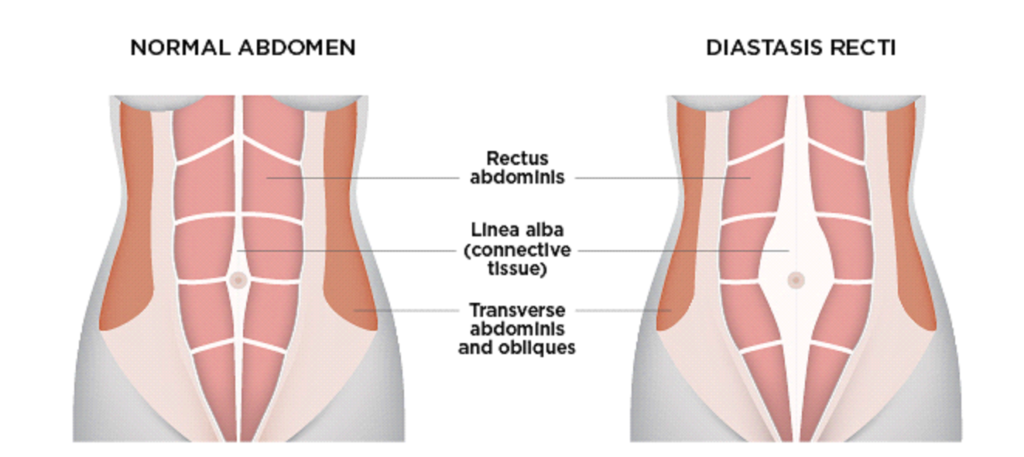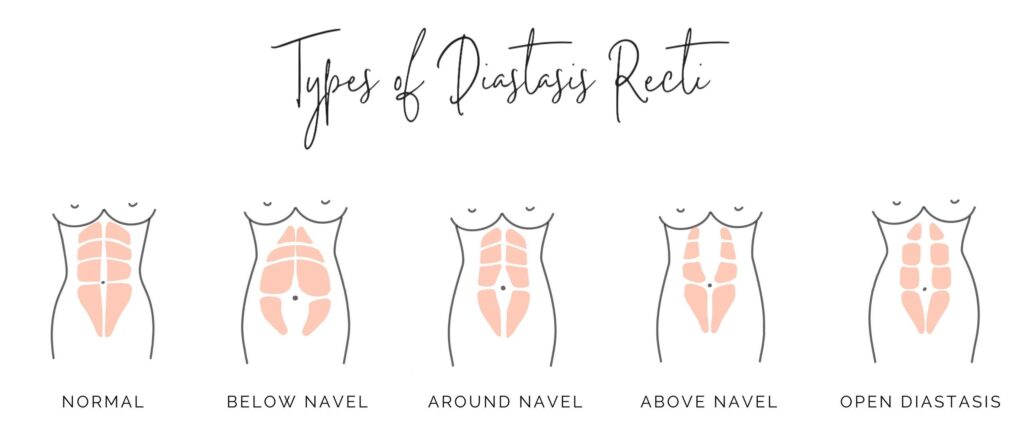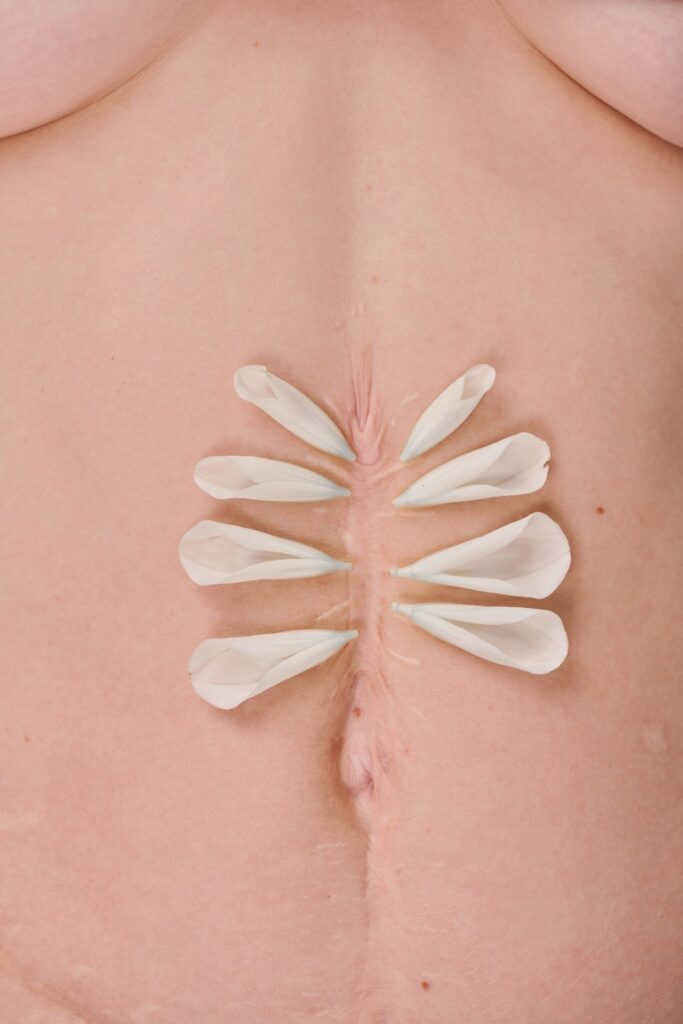You’ve been eating right, staying active, and doing everything to get your pre-baby body back—but that stubborn belly bulge just won’t go away. Is it lingering baby weight? Or could there be something else at play?
What if the real issue isn’t fat, but your abdominal muscles still being “open” from pregnancy?
This condition, known as Diastasis Recti Abdominis (DRA), affects 28.4% of postpartum women—yet, it’s rarely discussed. And here’s what’s even more surprising:
- Your risk of DRA isn’t just about pregnancy. Factors like age, number of pregnancies, BMI, and diabetes all play a role.
- For younger moms, pregnancy and diabetes are the biggest culprits.
- For older moms, obesity and diabetes are stronger risk factors.
But it’s not just about appearance—a weak core from DRA can lead to lower back pain, poor posture, and even pelvic floor dysfunction.

The good news? DRA is treatable! In this guide, we’ll walk you through how to check for diastasis recti, what NOT to do, and the safest ways to rebuild your core strength.
Let’s get started!
What is Diastasis Recti?

- It occurs when the left and right sides of the rectus abdominis (your “six-pack” muscles) separate due to stretching of the connective tissue (linea alba).
- It happens due to the pressure from the growing baby during pregnancy, or due to belly fat in obesity.

How to Know if You Have It?
- A noticeable bulge or ridge in the middle of your abdomen when you sit up or strain.
- Weakness in the core, leading to lower back pain or poor posture.
- A feeling of looseness or separation when pressing along the midline of your belly.
Is It Common?
- Yes! Around 60% of women experience some degree of diastasis recti after pregnancy.
- It is more common in multiple pregnancies, large babies, or excessive weight gain.
Can It Heal Naturally?

- Mild cases may heal on their own within 6–12 months postpartum.
- Recovery depends on factors like posture, movement habits, and exercises.
What Helps Recovery?

- Pelvic Floor & Core Strengthening Exercises (e.g., deep core activation, pelvic tilts).
- Diaphragmatic Breathing (helps activate deep abdominal muscles).
- Good Posture & Body Mechanics (avoid excessive bending, twisting).
- Wearing Abdominal Support (If Needed) – postpartum wraps can offer support but should not replace exercise.
What to Avoid?
❌ Traditional Crunches & Sit-Ups (they increase pressure and worsen separation).
❌ Planks & Heavy Lifting Too Soon (can strain the weak core).
❌ Holding Your Breath During Movements (increases intra-abdominal pressure).
When to See a Physiotherapist?
- If the gap is larger than 2 fingers wide beyond 6 months postpartum.
- If you experience pain, incontinence, or significant weakness.
- If you plan to return to high-intensity workouts and need a safe recovery plan.
The Role of Hormones in DR
- Relaxin & Estrogen: These pregnancy hormones soften connective tissues to allow expansion for the baby. This can delay recovery postpartum.
- Postpartum Healing: As hormones stabilize (usually after 6 months postpartum or after stopping breastfeeding), connective tissue may regain some tension.
Can DR Affect More Than Just the Abdomen?
Yes! DR impacts your whole core system, leading to:
- Pelvic Floor Dysfunction: Weak core muscles can contribute to urinary leakage, prolapse, or pain during sex.
- Lower Back & Hip Pain: The weakened abdominal wall forces your back and hips to compensate, leading to pain.
- Digestive Issues: Some women experience bloating, constipation, or a “pooch” appearance due to poor core function.
DR Can Happen Even Without Pregnancy

Though most common in postpartum women, DR can also occur in:
- Men & Women due to obesity, excessive abdominal strain, or incorrect weightlifting.
- Athletes who overuse their core muscles without proper stability training.
- Your risk of DRA isn’t just about pregnancy. Factors like age, number of pregnancies, BMI, and diabetes all play a role.
- For younger moms, pregnancy and diabetes are the biggest culprits.
- For older moms, obesity and diabetes are stronger risk factors.
11. How Long Does Healing Take?
- Mild cases: 6-12 weeks with proper core engagement.
- Moderate cases: 6-12 months with a structured rehab program.
- Severe cases: May require physical therapy or, in rare cases, surgery (abdominoplasty).
Can You Prevent DR in Future Pregnancies?
Yes! You can reduce the risk or severity by:
- Strengthening deep core muscles before and during pregnancy (e.g., TA activation, pelvic floor exercises).
- Practicing good posture and avoiding excessive abdominal pressure.
- Using the “log roll” technique when getting out of bed (rolling to the side before sitting up).
- Wearing supportive garments if needed, especially in later trimesters.
What’s the Best Approach to Recovery?
A step-by-step core rehabilitation program focusing on:
- Diaphragmatic breathing (activating the deep core and pelvic floor).
- Engaging the transverse abdominis (TA) with gentle core exercises.
- Postural adjustments to avoid straining the healing tissue.
- Gradual progression to functional and strength-based movements.
Simple Test to Check for Diastasis Recti (DR)
You can easily check for diastasis recti at home with this self-assessment test.
🔹 Step-by-Step Guide
✅ Step 1: Lie Down
- Lie on your back with your knees bent and feet flat on the floor.
✅ Step 2: Find the Midline
- Place one hand on your belly, with your fingers pointing toward your pelvis.
- Position your fingers just above your belly button.
Step 3: Lift Your Head Slightly
- Slowly lift your head and shoulders slightly off the ground (like starting a crunch).
- Keep your ribcage down and don’t hold your breath.
✅ Step 4: Feel for a Gap
- Press gently along the midline, feeling for a soft or sinking area between the abdominal muscles.
- Check above, at, and below the belly button.
How to Interpret Your Results
✔️ Less than 1 finger width → Normal
✔️ 1-2 fingers width → Mild separation (may heal naturally)
✔️ 2-3 fingers width → Moderate separation (core rehab needed)
✔️ 3+ fingers width → Severe separation (consult a physiotherapist)
🛑 If your belly forms a bulge or doming shape during the test, it’s a sign of weak core control!
It’s Time to Heal, Not Just Cope

If you’ve been blaming yourself for that lingering belly bulge, stop right there. It’s not just about weight—it’s about how pregnancy changed your core. Diastasis Recti isn’t a cosmetic issue; it’s a functional one. And the best part? You can heal it with the right approach.
But here’s the mistake many make—jumping into random exercises from social media. ❌
Not all workouts are safe for Diastasis Recti, and doing generalized exercises without professional guidance can actually make things worse.
🔸 Your healing journey should be customized based on the severity of your separation and muscle weakness.
🔸 Taking professional guidance is mandatory to ensure you’re activating the right muscles and not causing further damage.
Ignoring it won’t make it go away, and doing the wrong exercises might worsen the condition. Your body worked hard to bring life into this world—now it’s time to give it the recovery it deserves. 💛
So ask yourself:
➡️ Is your core truly strong, or just compensating?
➡️ Are you ready to stop struggling and start healing the right way?
The first step? Awareness. The next? Taking expert-guided action. Because a strong, pain-free, and confident YOU is worth it. 💪✨
Let’s rebuild from the inside out—your journey to recovery starts today. 🔥👇

